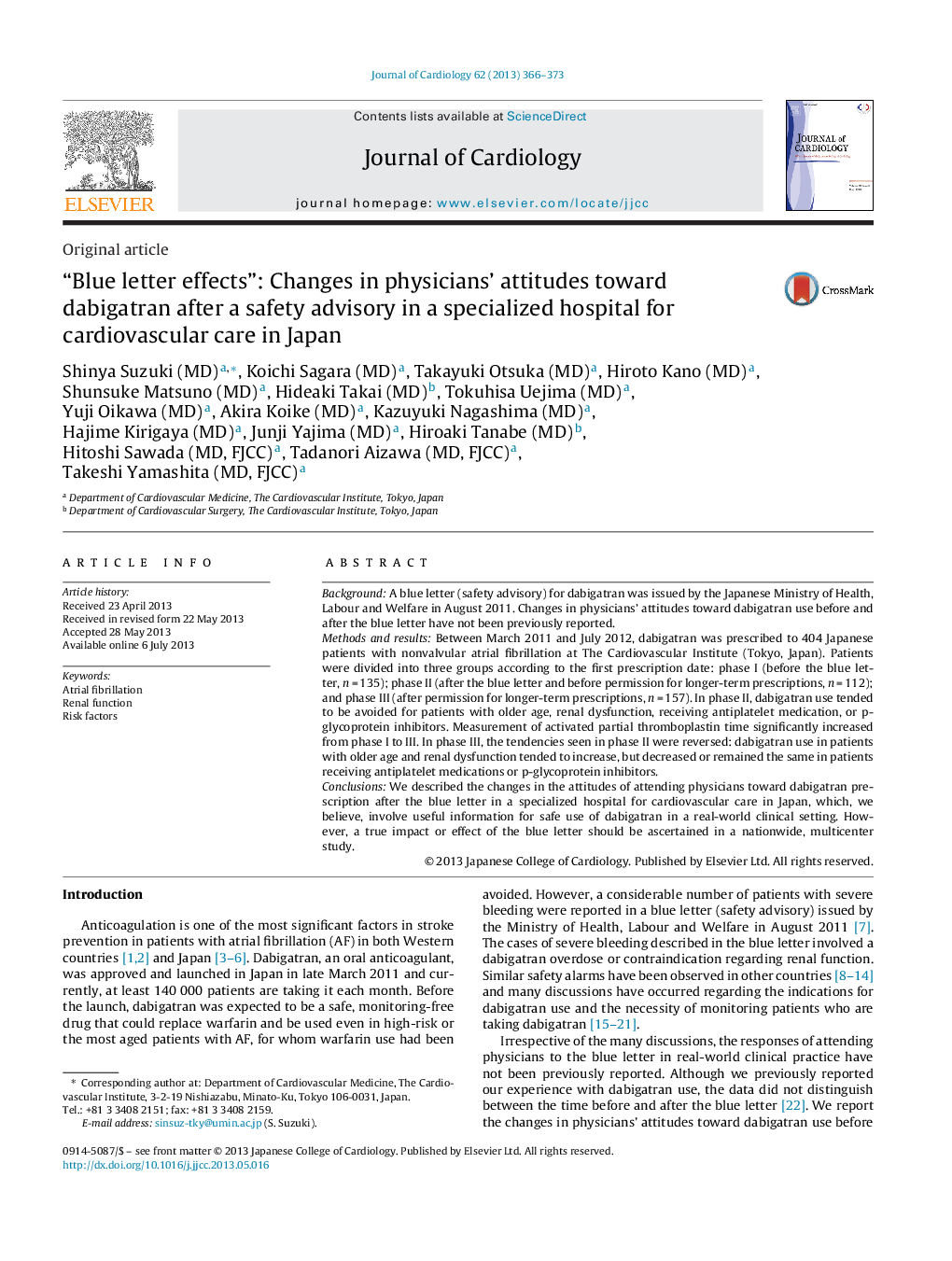| Article ID | Journal | Published Year | Pages | File Type |
|---|---|---|---|---|
| 2963101 | Journal of Cardiology | 2013 | 8 Pages |
BackgroundA blue letter (safety advisory) for dabigatran was issued by the Japanese Ministry of Health, Labour and Welfare in August 2011. Changes in physicians’ attitudes toward dabigatran use before and after the blue letter have not been previously reported.Methods and resultsBetween March 2011 and July 2012, dabigatran was prescribed to 404 Japanese patients with nonvalvular atrial fibrillation at The Cardiovascular Institute (Tokyo, Japan). Patients were divided into three groups according to the first prescription date: phase I (before the blue letter, n = 135); phase II (after the blue letter and before permission for longer-term prescriptions, n = 112); and phase III (after permission for longer-term prescriptions, n = 157). In phase II, dabigatran use tended to be avoided for patients with older age, renal dysfunction, receiving antiplatelet medication, or p-glycoprotein inhibitors. Measurement of activated partial thromboplastin time significantly increased from phase I to III. In phase III, the tendencies seen in phase II were reversed: dabigatran use in patients with older age and renal dysfunction tended to increase, but decreased or remained the same in patients receiving antiplatelet medications or p-glycoprotein inhibitors.ConclusionsWe described the changes in the attitudes of attending physicians toward dabigatran prescription after the blue letter in a specialized hospital for cardiovascular care in Japan, which, we believe, involve useful information for safe use of dabigatran in a real-world clinical setting. However, a true impact or effect of the blue letter should be ascertained in a nationwide, multicenter study.
